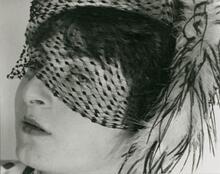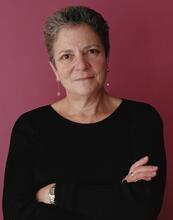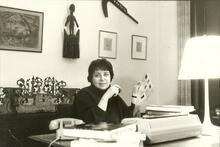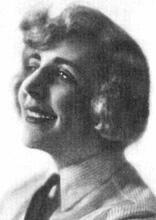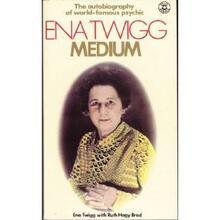Eve Arnold
The first American woman accepted into the groundbreaking cooperative Magnum Photos, Eve Arnold was hailed for both her photojournalism and her artistic work. Arnold began her career photographing fashion in Harlem in the early 1950s before a miscarriage led her to photograph births. She covered the McCarthy hearings and the civil rights movement, earning a place for herself with Magnum Photos. Known as much for her incisive accompanying essays as for the photos she took, Arnold has had her work featured in Look, Harper’s, and Paris Match. She was praised for her 1987 Marilyn Monroe: An Appreciation and her 1980 In China, which was named a notable book by the American Library Association and was honored with the Order of the British Empire in 2003.
When she wrote that “a photographer must have a passionate, personal approach,” Eve Arnold could have been describing herself. Celebrated as much for her candid portraits of the famous as for her sensitive photographs of the disadvantaged, Arnold embraced “the chance for personal expression and spontaneity photography gives me.”
Early Life and Family
Largely self-taught, Arnold was the first American woman to be accepted into Magnum Photos, a cooperative photography agency that in the 1950s helped photographers gain artistic and financial control of their work. Inspired by Magnum members such as Robert Capa and Henri Cartier-Bresson, Arnold took photographs for major news-magazines such as Life. Her well-known studies of China, women, political figures like Senator Joseph McCarthy and Malcolm X, and movie stars like Joan Crawford and Marilyn Monroe have placed her among the top American photographers.
Arnold was born in Philadelphia in 1913, one of nine children in a family of poor Russian immigrants. Growing up in the Orthodox Jewish tradition, which forbids the making of graven images, she came to her vocation by chance. As a medical student in the 1940s, she was given a camera by a boyfriend. Thus began her love affair with film. She managed a photo processing plant and took a photography class with Alexei Brodovitch at the New School for Social Research in New York City in 1952. She launched her career with her class project, an unconventional, spontaneous study of fashion in Harlem.
Photography Career
With her husband and son Frank (b. 1948), Arnold moved to Long Island, where she began a ten-year photographic study of a founding family of Brookhaven Township. After suffering a miscarriage, she combated depression by photographing births. During the 1950s, she covered a Republican national convention and the McCarthy hearings. In the 1960s, she moved to England, where her marriage ended. At that time, she photographed English subjects, traveled to the Soviet Union, and documented the American civil rights movement.
Arnold favored topics of social concern but also shot still photographs on movie sets to support herself and her son. In 1971, she made a film called Women Behind the Veil. However, she preferred still photography and began to produce books in the mid-1970s. Her many books of photography include The Unretouched Woman (1976), Flashback: The Fifties (1978), In America (1983), Private View: Inside Baryshnikov’s American Ballet Theatre (1988), All in a Day’s Work (1989), In Britain (1990), The Great British (1994), Film Stars: Photographs of Magnum Photos (1998), Magna Brava: Magnum’s Women Photographers (co-author, 1999), Eve Arnold: Film Journal (2002), and Handbook with Footnotes (2004). Her 1980 work In China was named a Notable Book by the American Library Association. Both it and Marilyn Monroe: An Appreciation (1987) were featured as Book-of-the-Month Club selections. Arnold received the 1996 Kraszna-Krausz Book Award for her book Eve Arnold: In Retrospect (1995).
Arnold was also noted for the incisively written texts that accompany her photographs. Her articles and pictures appeared in such magazines as Look, Harper’s, Geo, Stern, Epoca, the Sunday Times (London) magazine, and Paris Match.
She mounted one-woman shows at the Brooklyn Museum (1980), London’s Knoedler Gallery (1987) and National Portrait Gallery (1991), and New York’s International Center of Photography (1995). Her work was included in group exhibitions as well.
Honors and Legacy
In 1997, Arnold received honorary doctorates from the University of St. Andrews, Scotland, Staffordshire University, and the American International University in London. She was awarded an honorary O.B.E. (Order of the British Empire) by the British Government in 2003. Arnold’s long career charts the significant changes in American photojournalism, from the candid black-and-white shots of the 1950s to the innovative color compositions of more recent years. Her stirring portraits make a remarkable artistic contribution to twentieth-century photography.
Eve Arnold passed away on January 4, 2012.
Contemporary Authors. New Revision Series. Vol. 31: 13–14;
Contemporary Photographers (1982, 1995);
The Dictionary of Art. Edited by Jane Turner. Vol. 20 (1986);
“Eve Arnold.” Magnum Photos Photographe Portfolio website.



